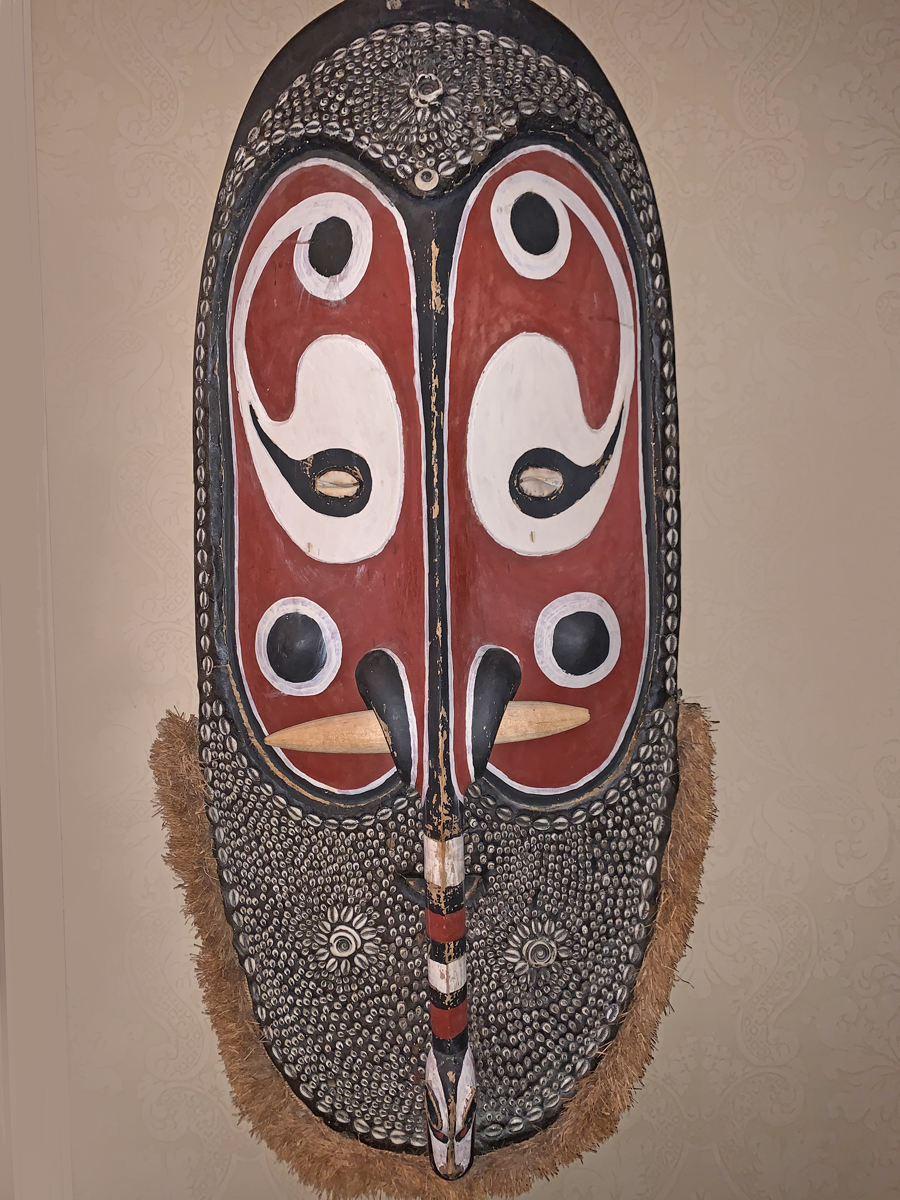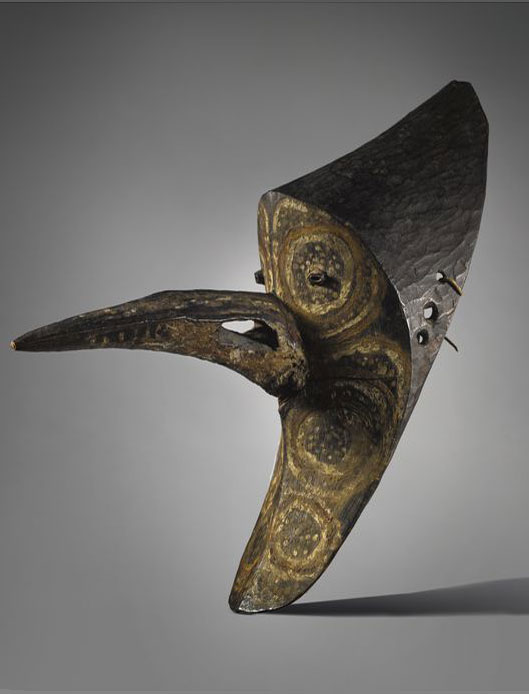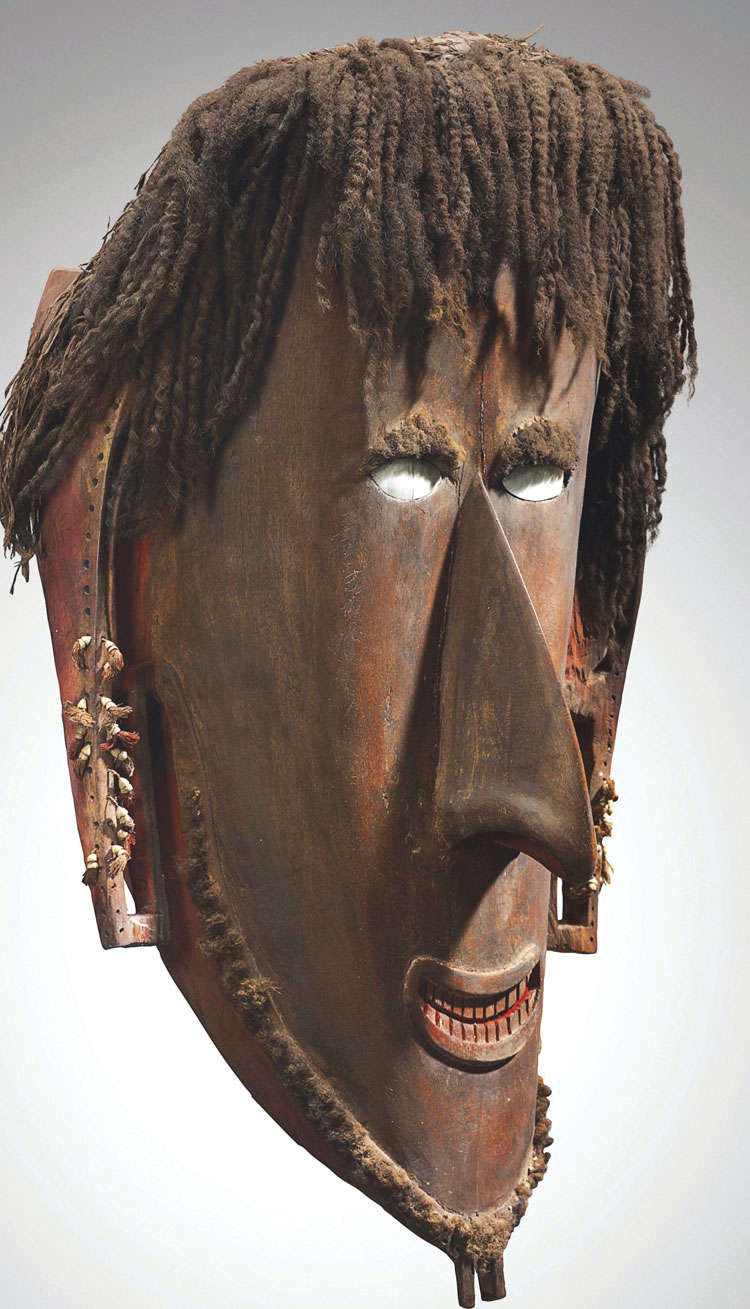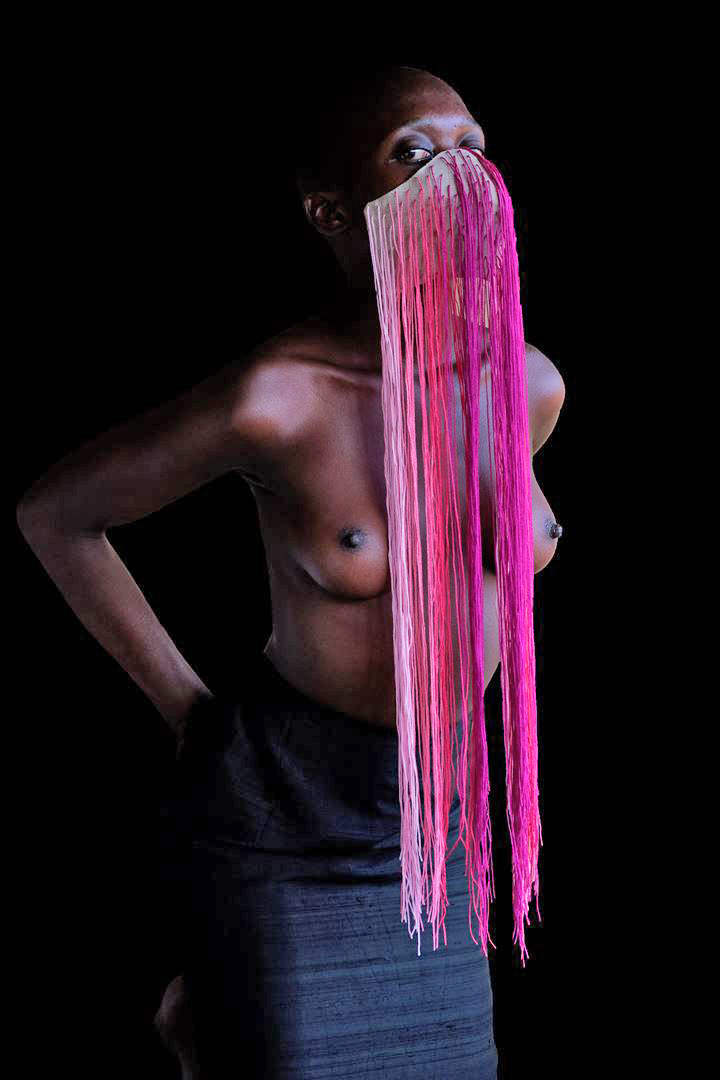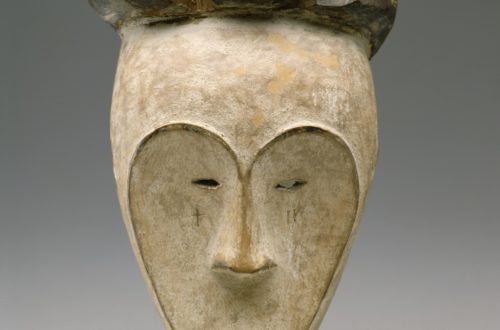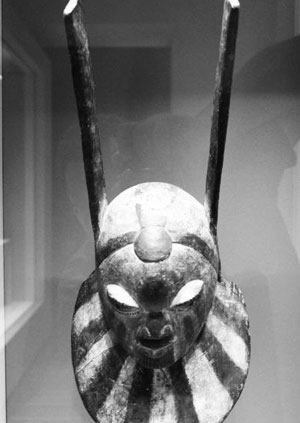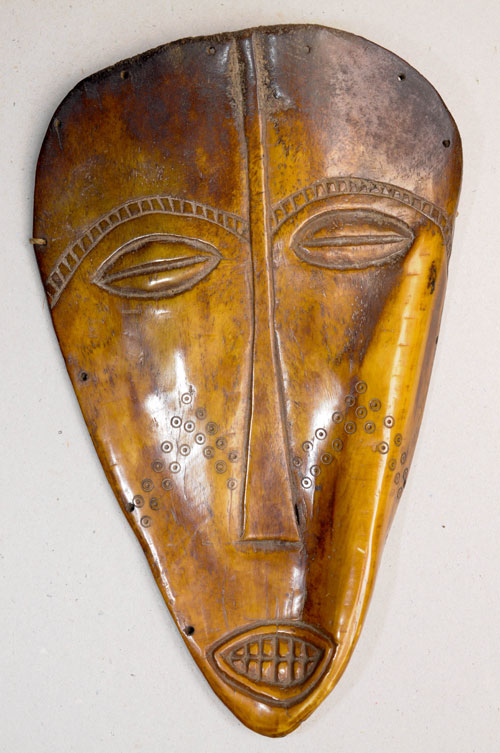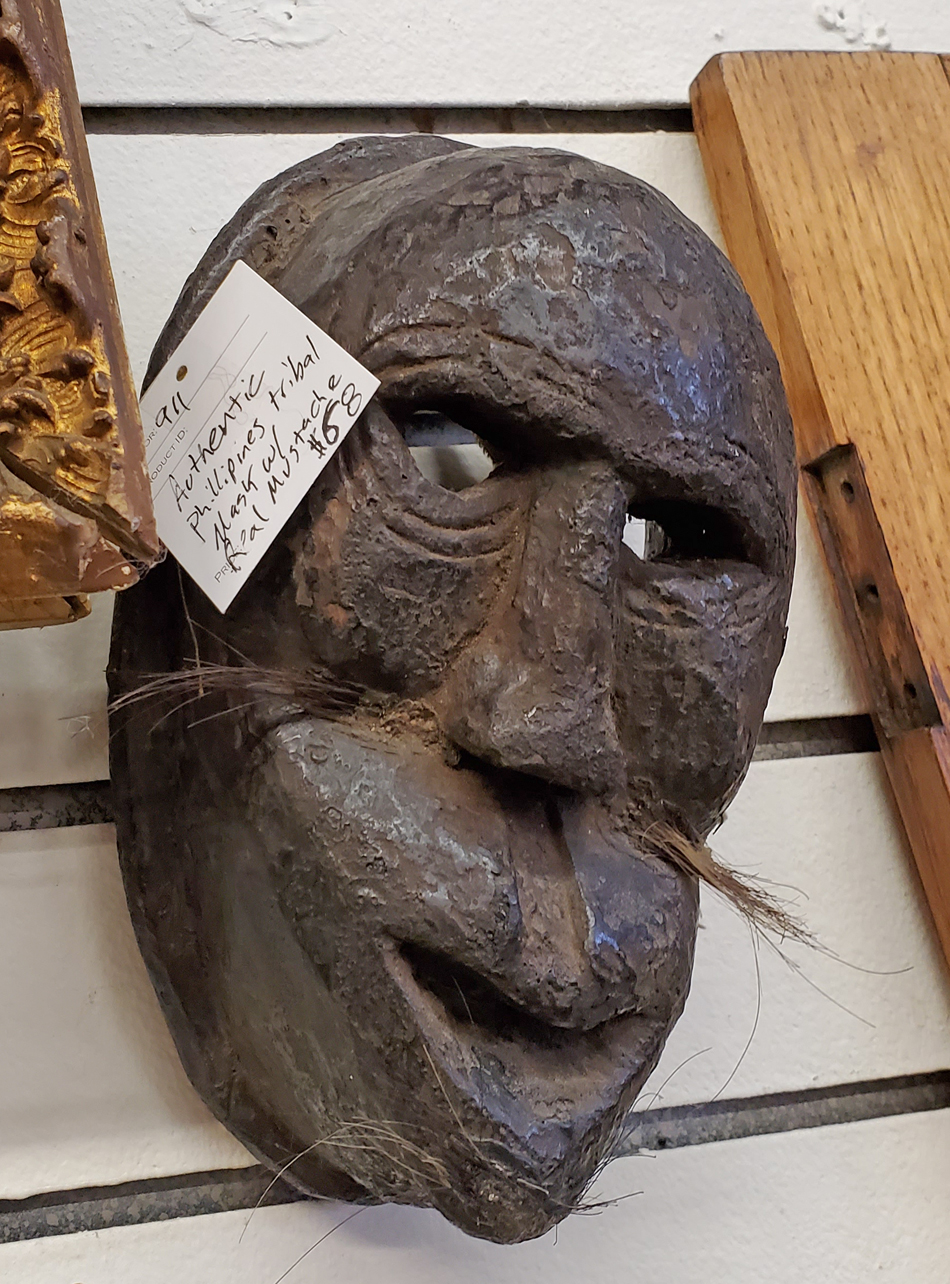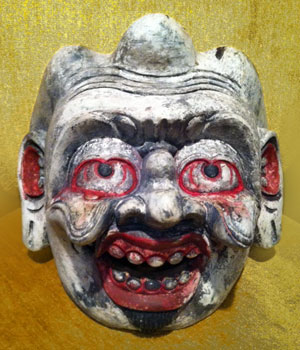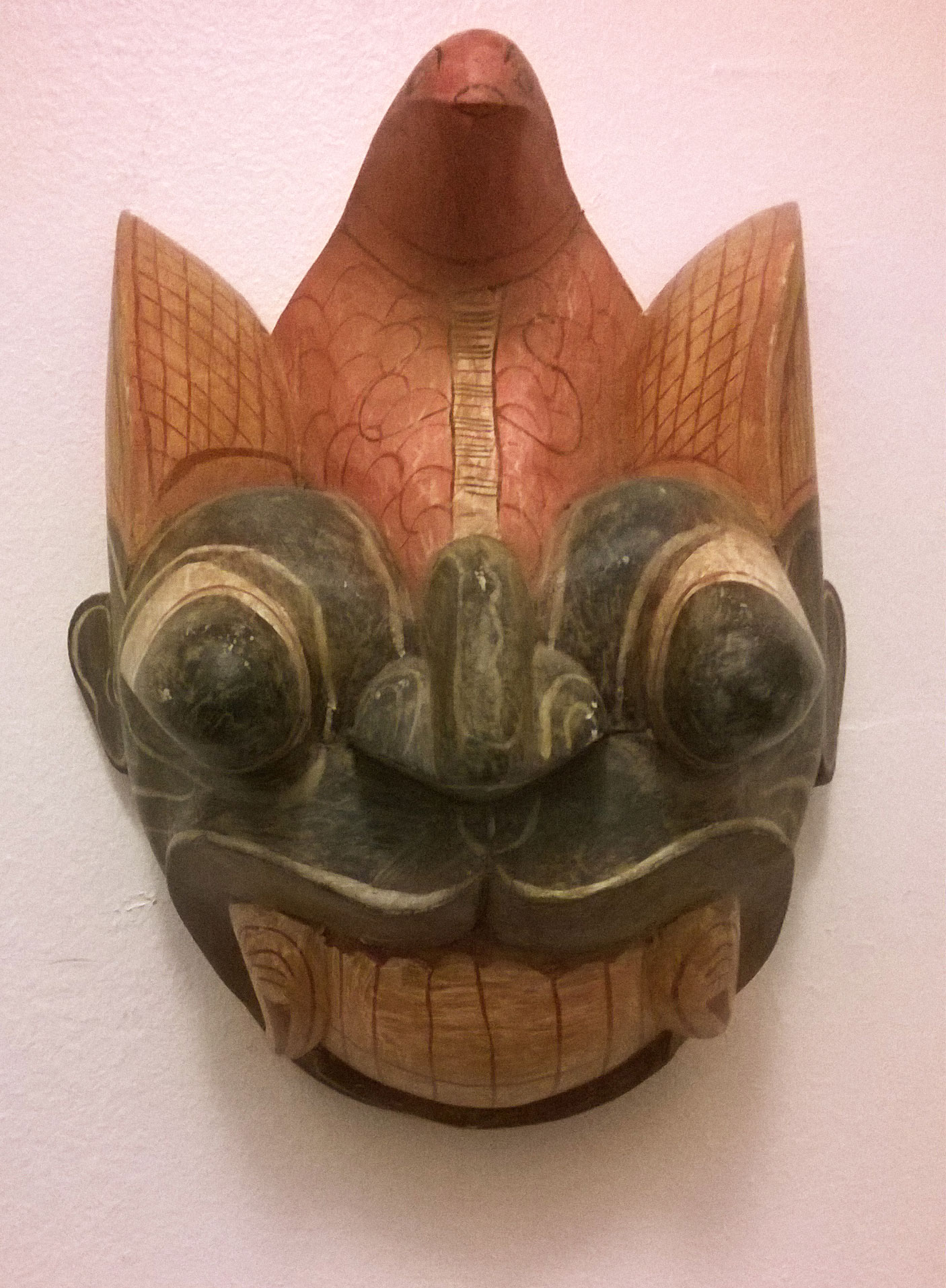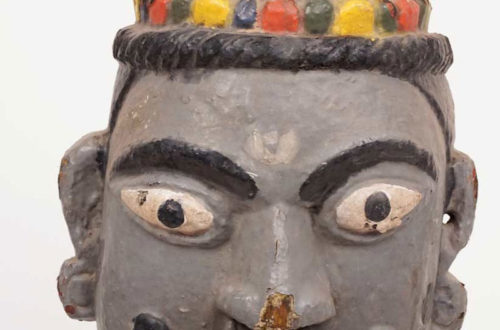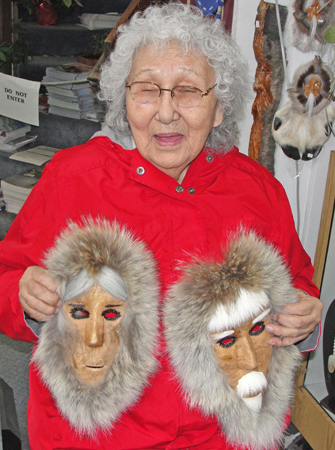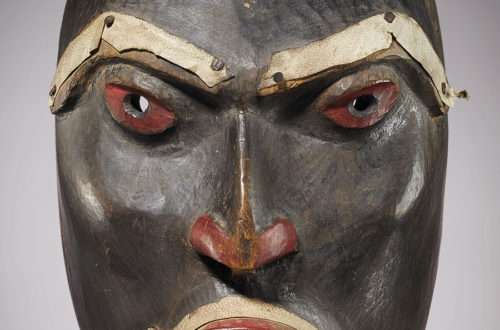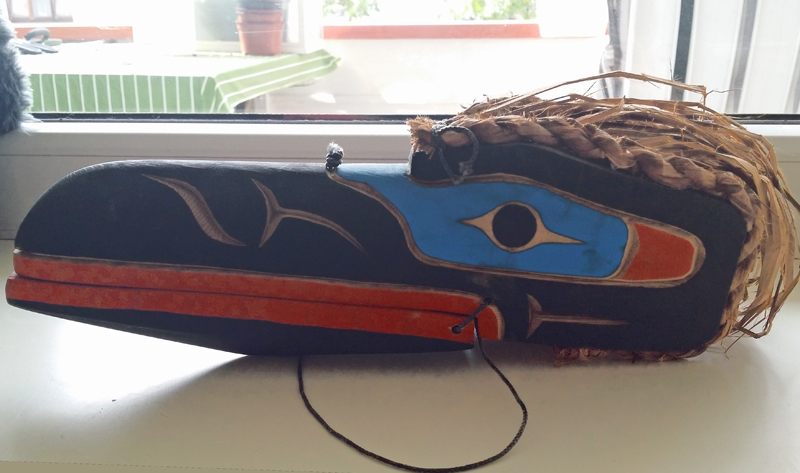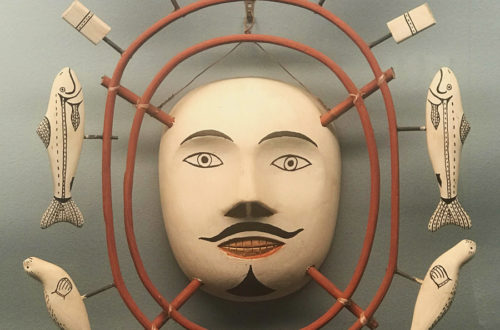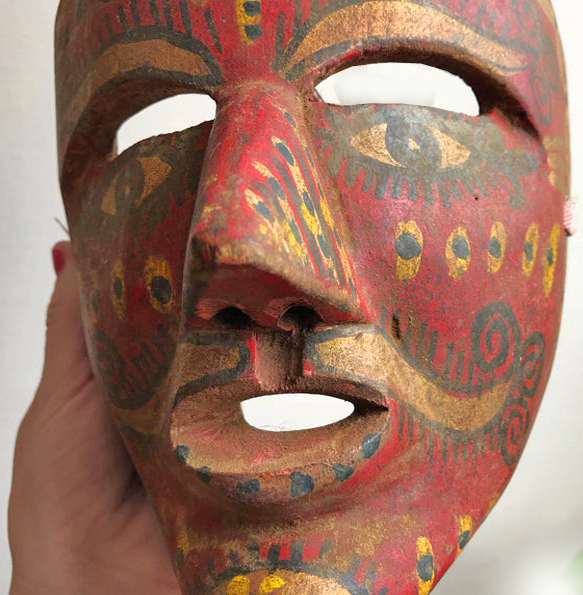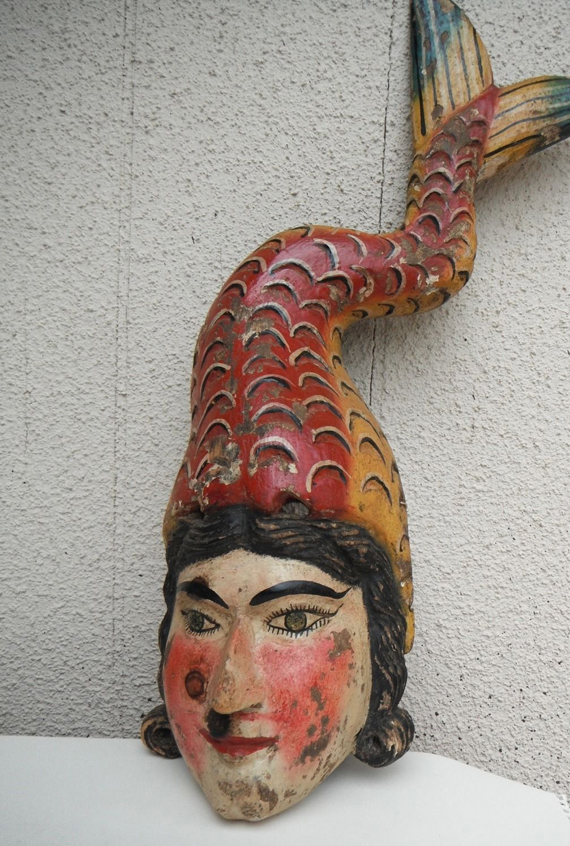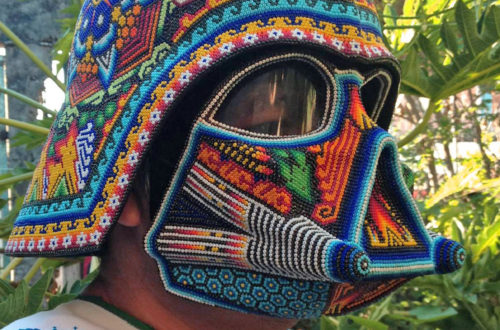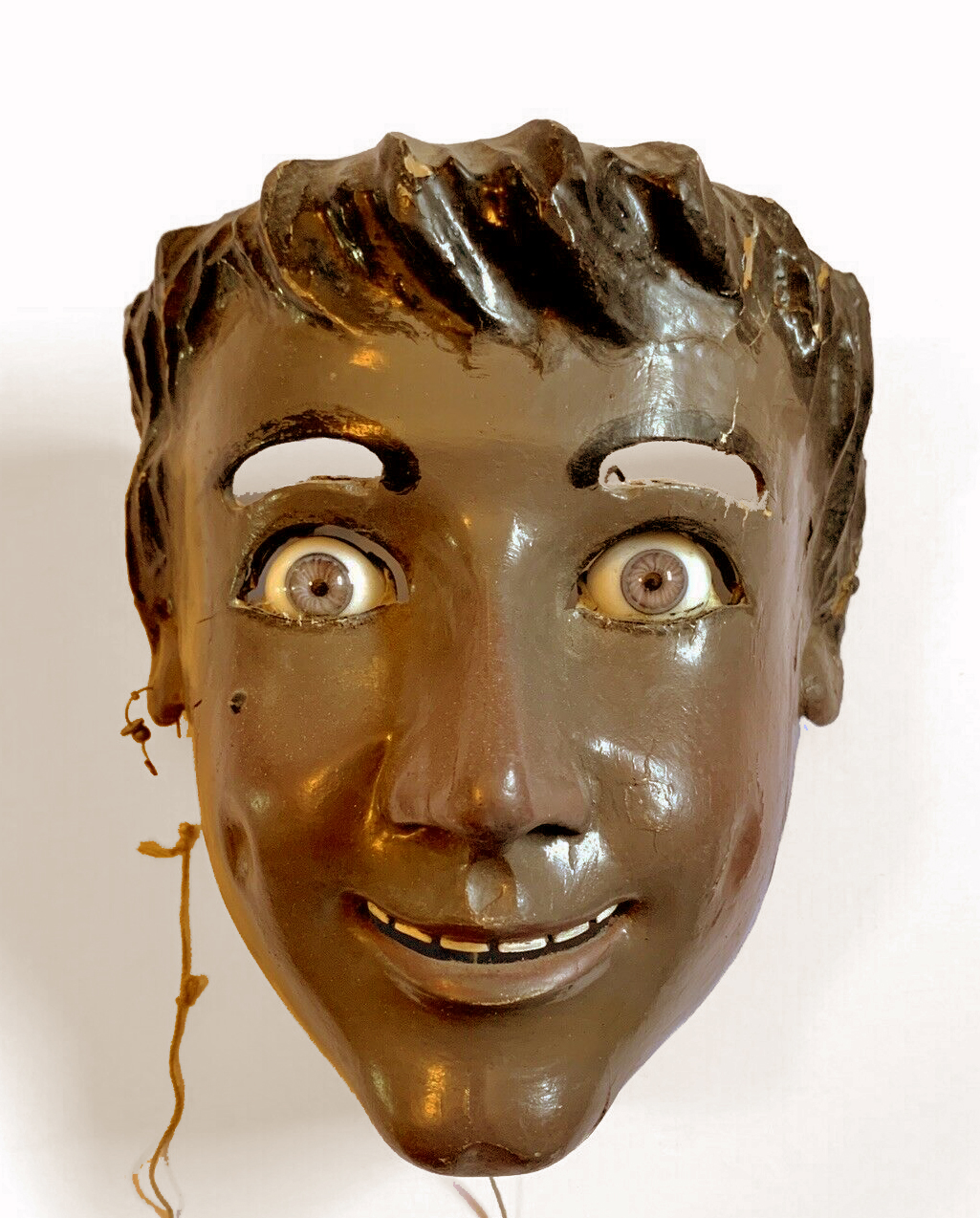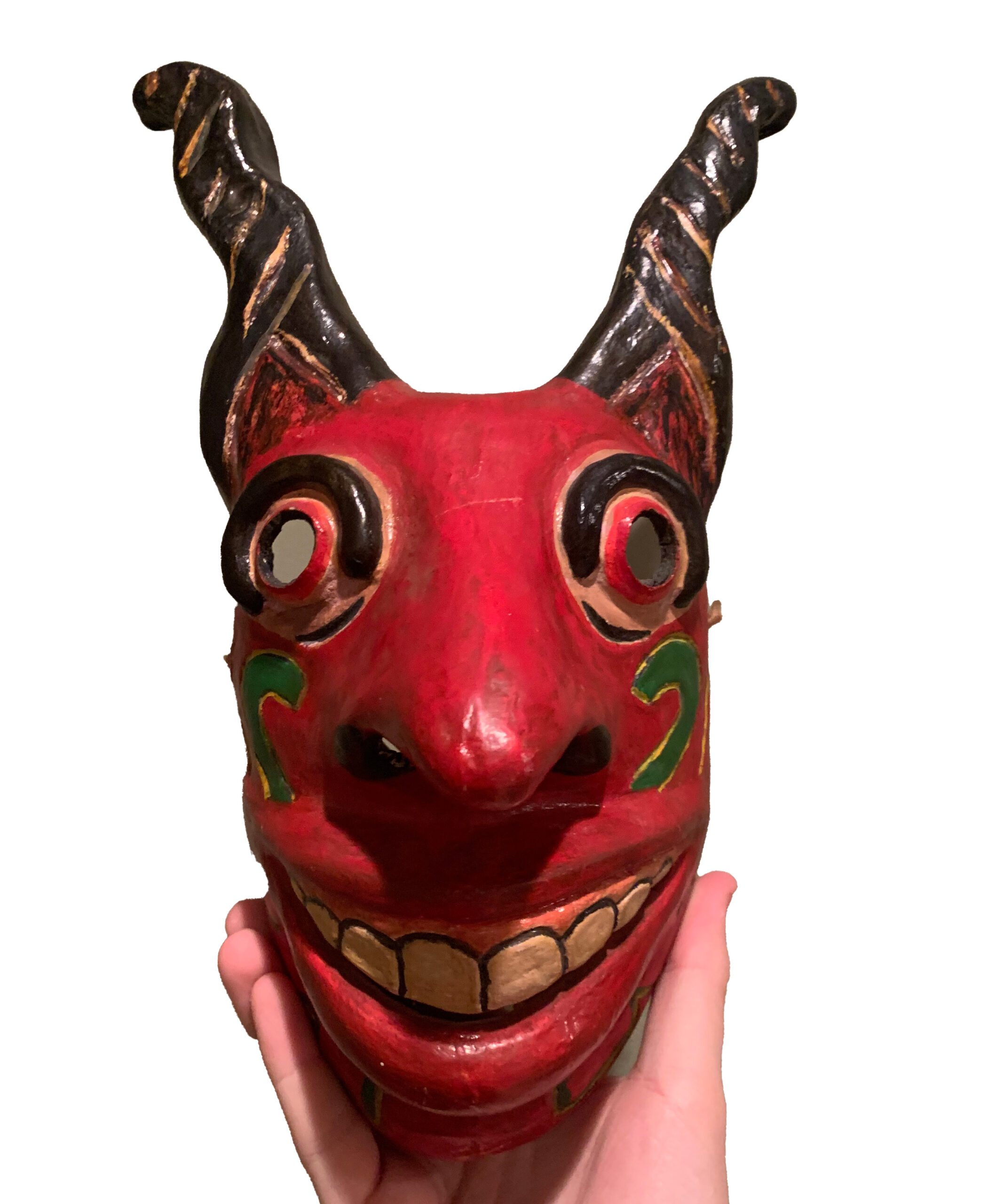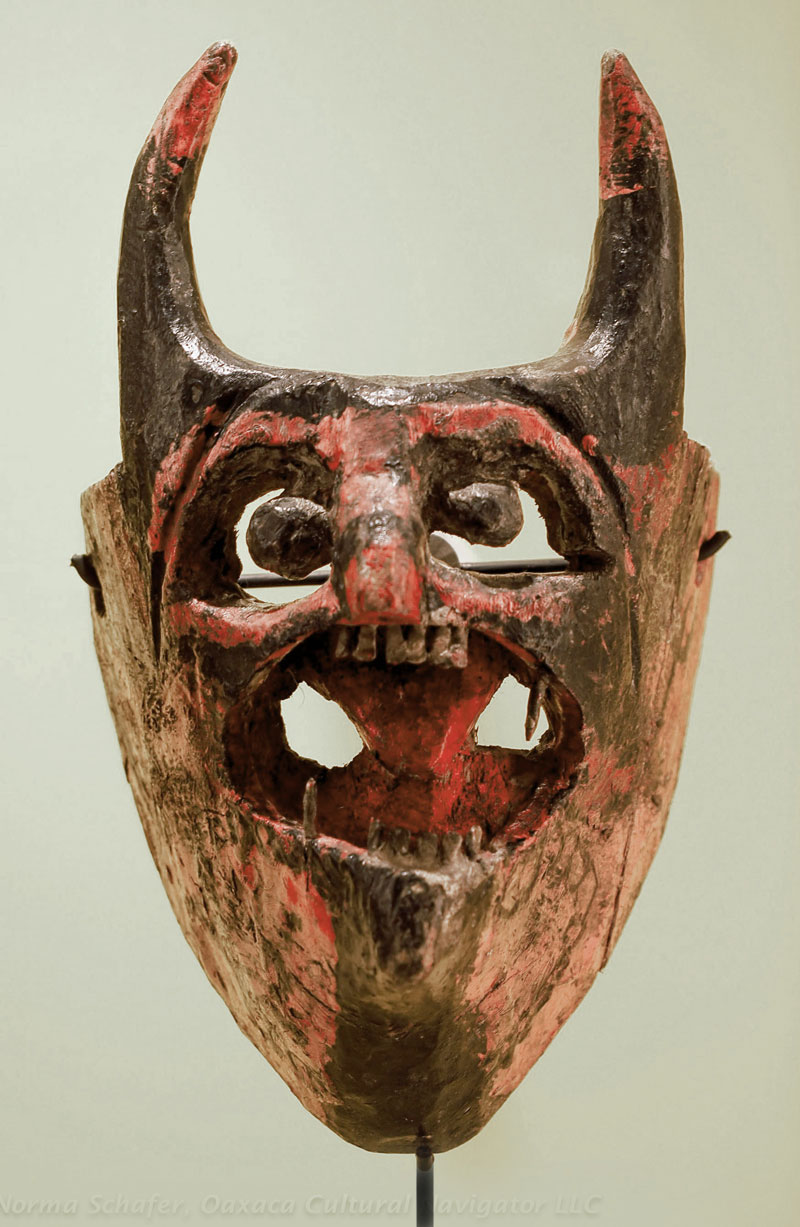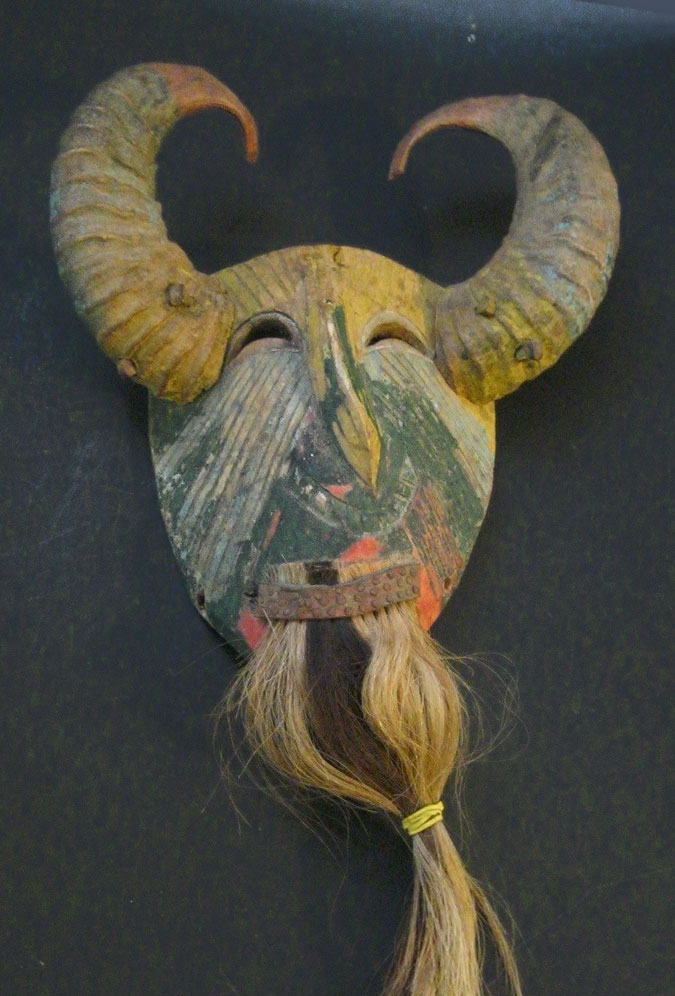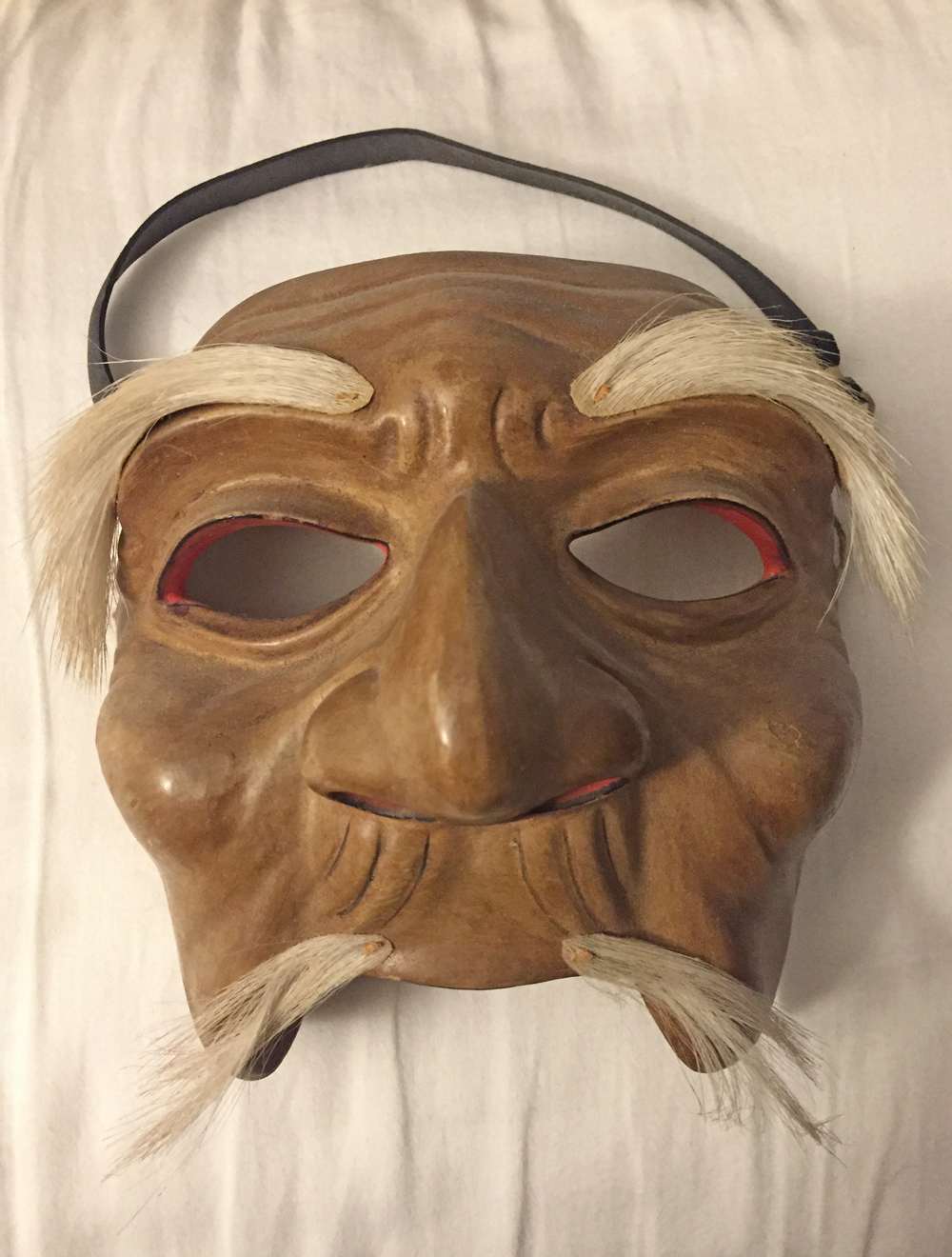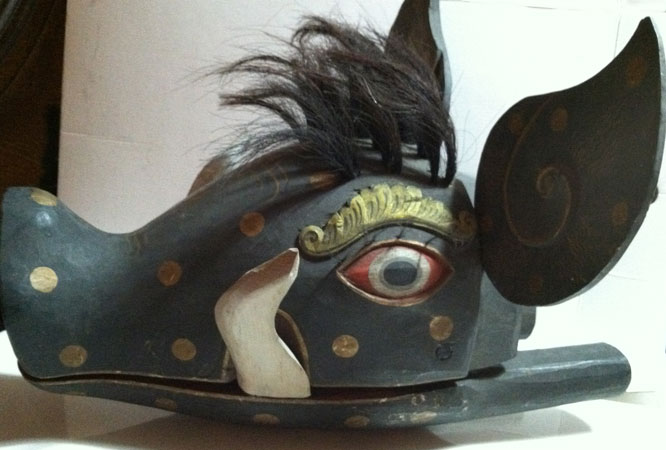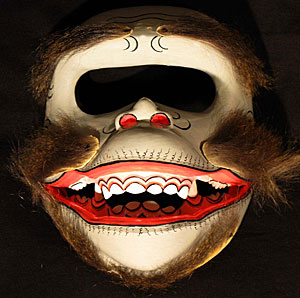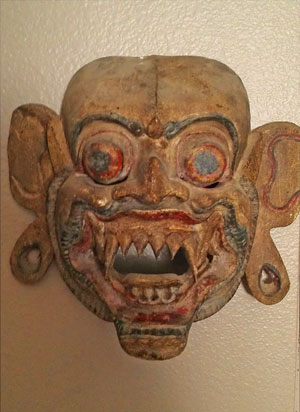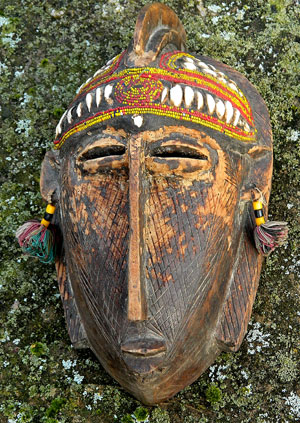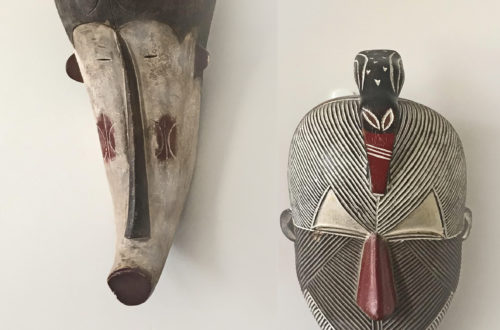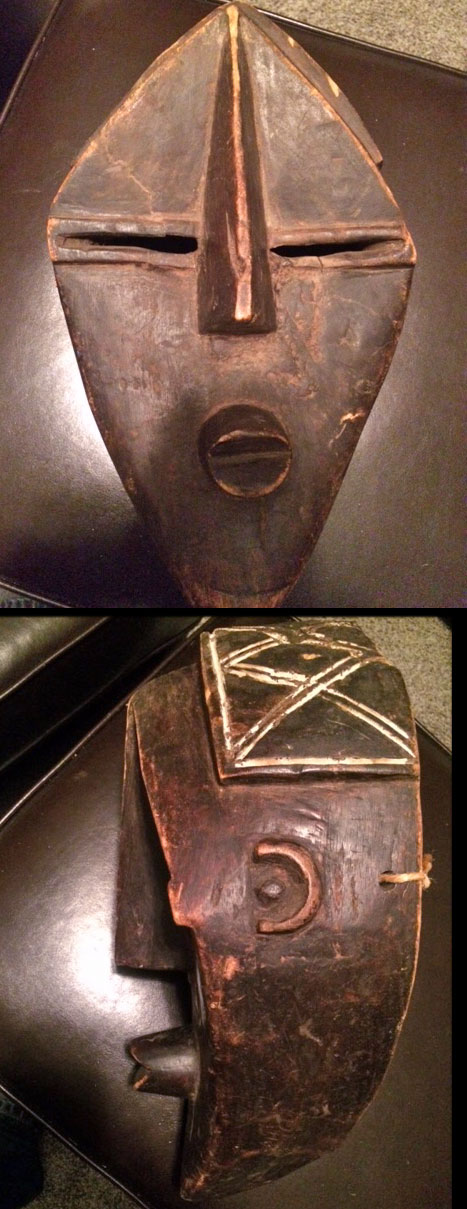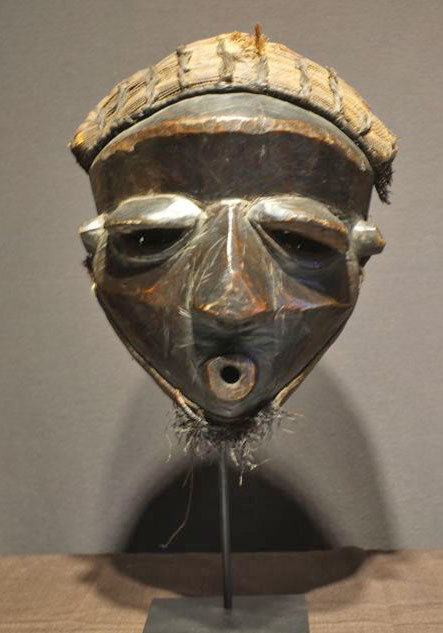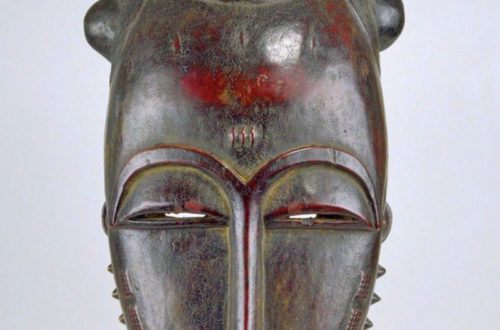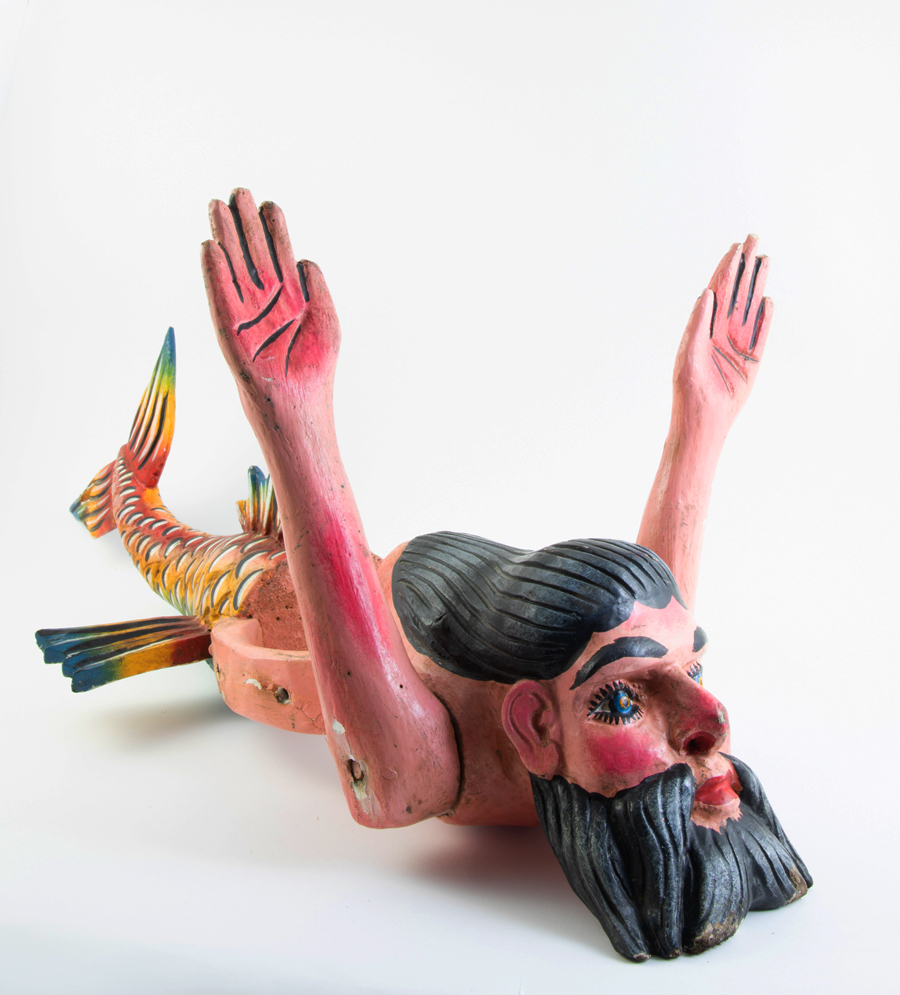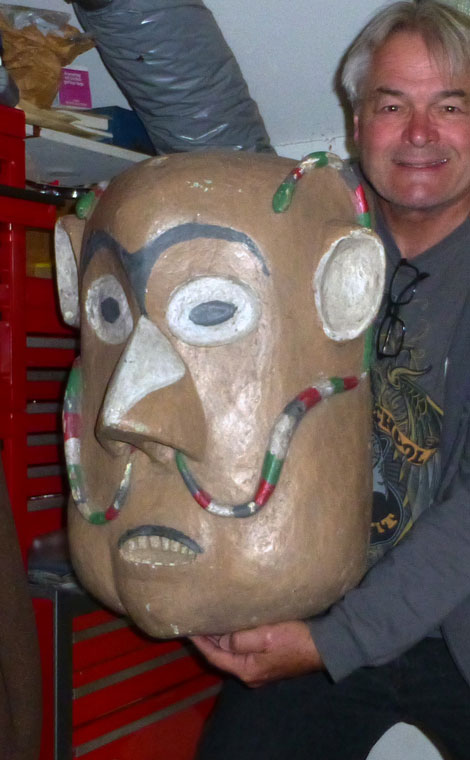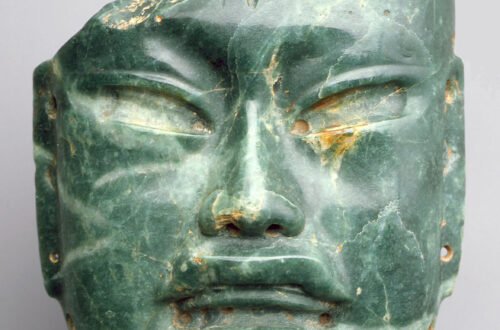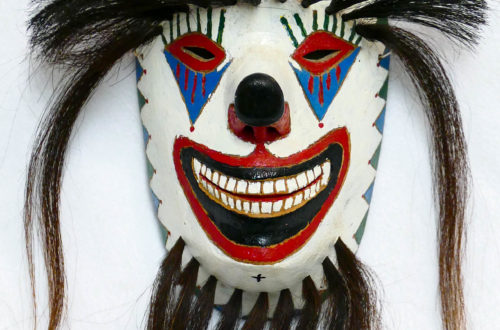Q: The family member who gifted this was unsure if he bought it in PNG or perhaps Australia. Even if just a tourist item, I would love to know any information you could share, country, are they masks or shields, did the snake and waterfowl represent anything? Robert, 1807 A: We don’t often see masks like this any more. It has been made by a tribesman in a remote part of the Sepic River area of Papua New Guinea. I can tell it is one of his first masks for trading with white men. His choice of colors, designs and workmanship are a little off. Also, he did not attempt…
-
-
Masquerade during the pandemic
I found this beautiful photo on Google with the following copy: African men and women wearing protective face masks decorated in brightly colored acrylic yarn are the subject of a new collaboration between Pierre Le Riche, who created the masks in Cape Town, and photographer Nonzuzo Gxekwa, who photographed them in Johannesburg. Entitled The Mask Project, the series is being added to the exhibition at THK Gallery, Cape Town, which continues until 29 August. Cases of Covid-19 in South Africa have been increasing by more than 10,000 per day, with the total fast approaching 500,000. The artists say the models were photographed bare-skinned to emphasize our myriad vulnerabilities during the pandemic. ‘I do…
-
Finding valuable masks is hard.
Q: I saw this at an antique store in Iowa. I’m curious, is it a valuable find? Ashley, 1806 A: It’s difficult for collectors as well as antique dealers to estimate the value of masks. The label on the side of this one says “tribal mask from the Philippines.” Actually, it’s from the Middle Highlands of Nepal in the Himalayas. That’s a bad start, but you managed to contact me. Now we can deal with age and authenticity. It would have been helpful if you had also sent scans of the side and rear views. Fortunately, your photo is hi-res, well lit and focused… and I have some knowledge of…
-
Eskimo skin & fur masks
Q: A friend of mine said she acquired this mask in the 80’s in Alaska, but didn’t know much else about it. Rick, 1805 A: I answered him: For at least 100 years Eskimo women have been making these skin and fur masks… occasionally for ceremony, but mostly they are sold to tourists for about 10 to 20 dollars. I thought about it later. These masks, which are widely available and reasonably priced, are the primary source of income for many elderly Eskimo women. Why not buy one for your house or some as Christmas gifts. The Artic people are under-privileged and can use your support. I hope this nice…
-
Red Moor mask, E. Central Mexico
Though faded and dirty, this colorful red Moor mask is a classic. It could be over a 100 years old, or a very well made replica. Moor masks can also be painted gray, brown or black. The Dance of the Moors and Christians is an important celebration in the states of Veracruz, Hidalgo, Talaxcala and Puebla. The dance arose from the teachings of missionaries as part of an effort to instill respect for and fear of the Spaniards in the indigenous peoples, and to convince them that the victory of Christianity over other faiths—by violence whenever necessary—was inevitable.
-
Catrin mask from Tlaxcala, Mexico
Tlaxcala is a small state close to the center of Mexico where they have many carnivals with masked dancer called Catrins. The characters portrayed can be male or female, any age or any race. They are also of high quality and often sell to visiting tourists for a lot of money. This black boy mask has been dance a lot. A mush beer gets drunk at the carnivals, which may explain the damage. Newer ones can be magnificence works of art. One of the great things about Mexican masks is that you can find high art and primitive, low art. Better yet, there are all kinds of animals, monsters, gods,…
-
World famous maskmaker from Bali
Q: I purchased this mask at an auction in Florida 3 years ago and only recently became interested in its background and value. The back is labeled IDA BAGUS ALIT, BALI, 2c. Thank you for any info you might have. Keith, 1802 A: The surname “Anom” should have been written on the rear of your mask. Shops sometimes make spelling mistakes. He was one of the finest Balinese carvers ever… and Bali made the best with masks, with the possible exception of the Japanese. Yours has not been painted. Also, it appears to me fairly old and is not one of his best works. Ida Bagus Anom was an…
-
Interesting Dan gle mask
Q: I found this little passport Dan mask in a flea market for a bargain price. What made me interested was just the rear, which looked older. It was only 20 cm long, more or less. Can you please give me your opinion? Monica, 1803 A: Of course, this is some sort of Dan mask. It has several interesting features. There are two pairs of extra holes for fastening it to a belt or a body part. The carving does not appear to have been done with modern steel tools. And, as Monica points out, the rear looks authentically old. There are perhaps more Dan masks than any other kind.…
-
Beautiful African mask
Q: I am unable to define the possible origin of this mask. It was acquired it a few years ago because it has a “mysterious” look. After some personal research I found that the geographical origin could be the Ivory Coast region and it has some features of the Guro tribe. Notice the scarifications on the forehead and cheeks. The overall condition is good. It is 20 cm high. Thanks for your advice. Patrick, 1801 A: My advice is for you to keep this beautiful mask… or give it to a museum. You are right, it is probably a female character from the Guro or Baule of Ivory Coast. It’s…
-
Mask worn on waist
Q: Here are the Mexican masks I’ve photographed and cataloged so far. I have many more to do. Pick any one you want. Kevin, 1800 A: I’ll but pick the most unusual one. It is a newly made decorative from Guerrero, Mexico. Some of the dancers in that state impersonate St. James, fish, mermaids, or horses that they wear around their waists as if they’re riding them. Though these strange masks are popular with tourists and mask collectors now, they’ve been danced in Guerrero for hundreds of years. This one would never be danced. Only a tourist will buy one with the tail of a mermaid…
